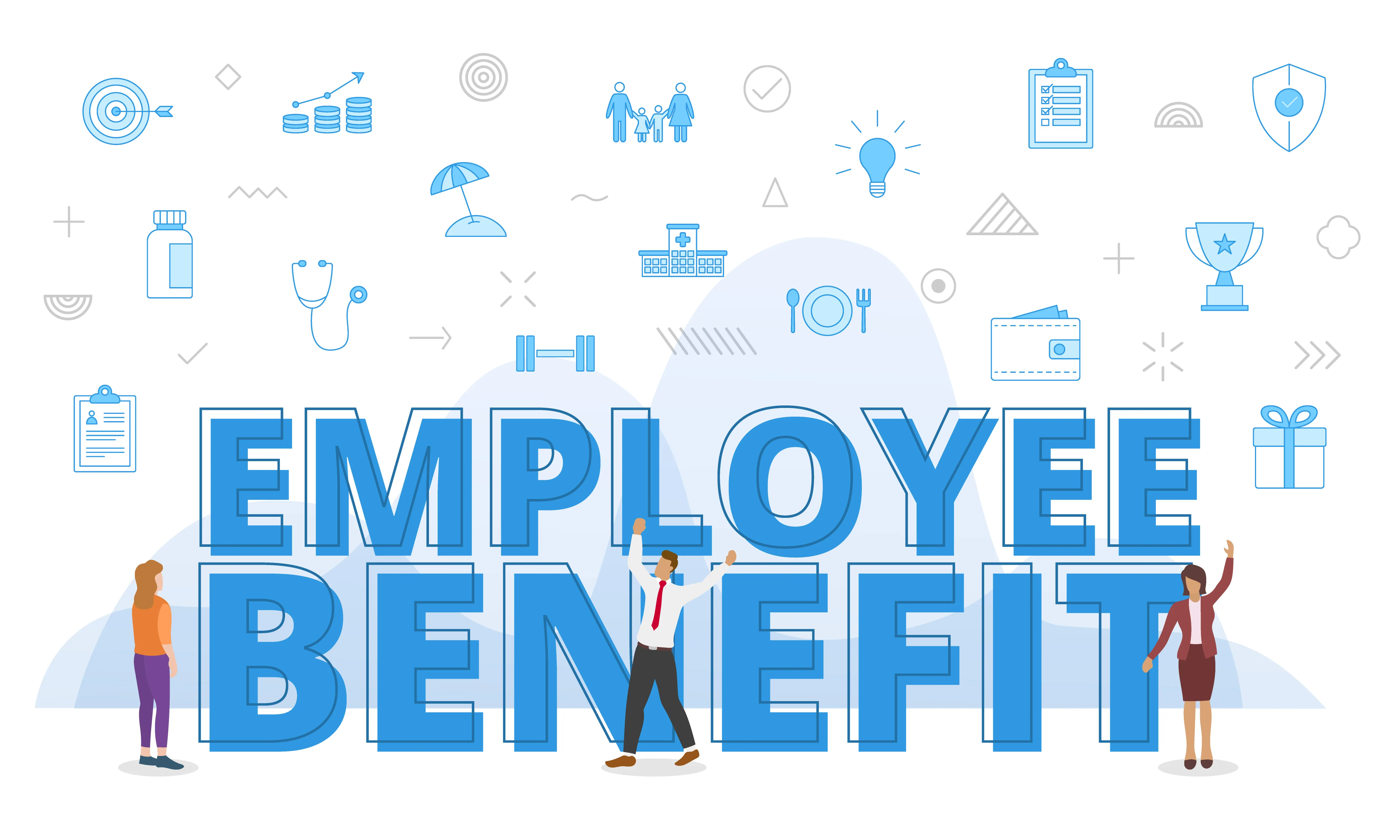Certainty today and tomorrow.
Ongoing communication, education and adaptation are key to staying current. Join us here to see updates on topics important for you and your business.
February 27, 2024
As attractive employee benefits program remains a cornerstone for attracting and retaining top talent. Delving into the realm of insurance and employee benefits reveals a multitude of ways through which savvy employers can create a supportive, competitive, and productive workplace environment. This comprehensive guide aims to empower employers with the knowledge to make informed decisions that enhance both employee well-being and organizational growth.

Insurance and employee benefits have become indispensable in the modern workplace. These offerings go beyond mere financial protection; they are a reflection of the company’s values, demonstrating a dedication to the health, well-being, and security of employees. By integrating comprehensive benefits into the organizational framework, companies not only attract superior talent but also cultivate a culture of loyalty and motivation.
This strategic investment in the workforce helps mitigate turnover and bolsters productivity, establishing a positive organizational reputation. As the business landscape evolves, so does the role of benefits in shaping a desirable workplace, making it critical for employers to understand and effectively implement these programs.
Providing health insurance to employees stands as a pivotal element of any competitive benefits package, fostering a healthier, more secure workforce. This offering not only contributes to a substantial increase in employee satisfaction and morale but also positions the company as a preferred employer in the job market.
Offering combined insurance employee benefits significantly strengthens an employer’s position in the competitive job market, enhancing both employee retention and attraction. These comprehensive benefits packages signal to potential and current employees that their employer values their health, well-being, and financial security. By integrating various insurance options, employers can cater to the diverse needs of their workforce, making their company an attractive place to work.
This strategic approach not only solidifies loyalty among existing staff but also draws in top talent, eager to work for an organization that prioritizes their employees’ benefits and overall satisfaction.
Implementing group employee benefits insurance plays a pivotal role in enhancing workplace morale and job satisfaction. When employees feel their health and welfare are prioritized through comprehensive benefits, employees can remain focused on their work and less burdened by unmet healthcare needs. This elevated sense of well-being translates into a more harmonious and productive work environment, where individuals are motivated to contribute their best and show up their healthiest self.
Acknowledging and addressing the diverse needs of employees through tailored benefits fosters a culture of appreciation and respect, further solidifying their loyalty and satisfaction with their employer.
Integrating combined insurance employee benefits into the workplace significantly boosts productivity and engagement among employees. When individuals feel their health and well-being are protected, they are more inclined to fully engage in their work, contributing to a vibrant and productive organizational culture. This enhanced focus and dedication are direct outcomes of the security and peace of mind provided by comprehensive benefits packages.
As employees experience the tangible support of their employer through these benefits, their motivation and commitment to their roles intensify, driving the organization towards greater success and innovation.
Offering group employee benefits insurance plays a crucial role in alleviating concerns over escalating healthcare costs for employees. This form of coverage ensures that individuals are not left to face medical expenses alone, providing a safety net that promotes financial stability and peace of mind. By mitigating the burden of unforeseen healthcare costs, employers can significantly reduce the stress associated with health-related financial worries, allowing employees to focus more on their work and less on financial uncertainties.
By introducing a comprehensive suite of insurance and employee benefits, organizations send a powerful message about their commitment to employee well-being. This proactive approach goes beyond conventional expectations, weaving a culture of care and support throughout the company.
Employees recognize and value this dedication, seeing it as a reflection of their employer’s genuine interest in their health, happiness, and security. This commitment fosters a deeper sense of belonging and appreciation among the workforce, further enhancing the employer-employee relationship and promoting a positive and engaging workplace atmosphere.
Offering insurance and employee benefits can lead to potential tax advantages for employers. These financial incentives often come in the form of deductions for contributions made towards employee health plans, retirement accounts, and other permissible benefit programs. By effectively structuring these benefits, companies can significantly reduce their taxable income, translating into direct tax savings.
This strategic approach not only enhances the overall benefits package offered to employees but also optimizes the employer’s financial health by leveraging tax laws designed to encourage the provision of employee benefits.

In today’s diverse workplace, one size does not fit all when it comes to employee benefits. Understanding the unique needs and preferences of your workforce is essential for crafting benefit packages that resonate with employees and drive engagement.
Before designing benefit packages, it’s crucial to conduct a thorough assessment of employee demographics and preferences. This may involve gathering data on factors such as age, marital status, family size, and health status. Surveys, focus groups, and individual interviews can also provide valuable insights into employee preferences regarding benefits.
Once you have a clear understanding of employee demographics and preferences, you can begin customizing benefit packages for different workforce segments. For example, younger employees may value perks like student loan assistance or wellness programs, while older employees may prioritize retirement planning options. Tailoring benefits to specific demographic groups ensures that each employee feels valued and supported.
In addition to demographic differences, employees may have diverse needs and expectations based on their individual circumstances. For example, employees with chronic health conditions may require comprehensive health insurance coverage, while working parents may benefit from flexible work arrangements or childcare assistance. By offering a range of benefits that address diverse needs and expectations, employers can create a supportive and inclusive workplace culture.
Adhering to legal and regulatory requirements is paramount for employers when designing and administering employee benefit programs. Failure to comply with state and federal regulations can result in costly penalties and legal repercussions.
Employers must stay up-to-date with ever-evolving regulations governing employee benefits. This includes laws related to health insurance, retirement plans, paid leave, and other benefit offerings.
Employee benefits often have tax implications for both employers and employees. Employers must understand the tax treatment of different benefit types and ensure accurate reporting to regulatory agencies. Likewise, employees need to understand how their benefits may affect their tax liabilities and financial planning. Providing clear communication and resources on tax-related matters can help employees make informed decisions regarding their benefits.
Employers have a responsibility to ensure fairness and equity in benefit offerings across the organization. This includes providing access to benefits for all eligible employees and avoiding discriminatory practices. Employers should periodically review benefit programs to assess their impact on different employee groups and make adjustments as needed to promote fairness and equity.

Effective communication of benefits is key to ensuring that employees fully understand and appreciate the value of what’s available to them. Employ clear, concise language and utilize a variety of channels such as email, company intranets, and meetings to reach everyone. Regularly schedule informational sessions, especially during enrollment periods, and consider one-on-one consultations to address individual concerns or questions. Highlighting real-life examples of how benefits can be used can also make abstract concepts more relatable. Finally, solicit feedback on communication methods to continuously improve how you share this vital information with your team.